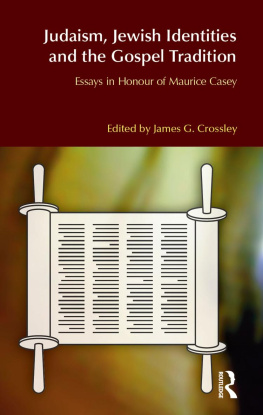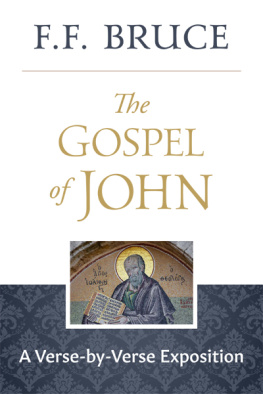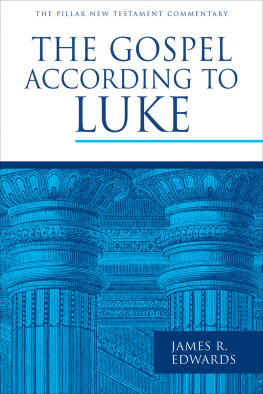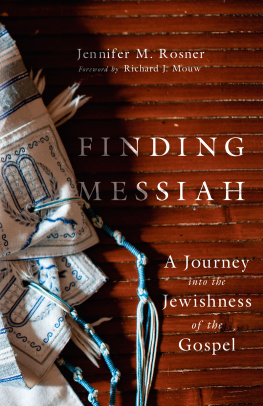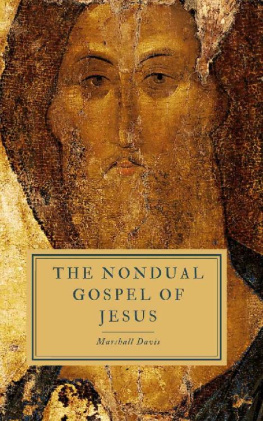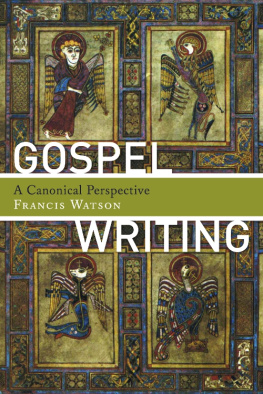JOHN
ABINGDON NEW TESTAMENT COMMENTARIES
Victor Paul Furnish, General Editor
Perkins School of Theology,
Southern Methodist University
EDITORIAL BOARD
Jouette M. Bassler
Perkins School of Theology,
Southern Methodist University
John H. Elliott
University of San Francisco
Pheme Perkins
Boston College
Vernon K. Robbins
Emory University
D. Moody Smith
The Divinity School, Duke University
ABINGDON NEW TESTAMENT COMMENTARIES

JOHN
D. MOODY SMITH

ABINGDON NEW TESTAMENT COMMENTARIES:
JOHN
Copyright 1999 by Abingdon Press
All rights reserved.
No part of this work may be reproduced or transmitted in any form or by any means, electronic or mechanical, including photocopying and recording, or by means of any information storage or retrieval system, except as may be expressly permitted by the 1976 Copyright Act or in writing from the publisher. Requests for permission should be addressed to Abingdon Press, 201 Eighth Avenue South, Nashville, TN 37203.
This book is printed on recycled, acid-free, elemental-chlorinefree paper.
Library of Congress Cataloging-in-Publication Data
Smith, D. Moody (Dwight Moody)
John / D. Moody Smith.
p. cm. (Abingdon New Testament commentaries)
Includes bibliographical references (p. ) and index.
ISBN (0-687-05812-0 (pbk.: alk. paper)
1. Bible. N.T. John Commentaries. I. Title. II. Series.
BS2615.3.S66 1999
226.507dc21
99-31075
CIP
Scripture quotations, unless otherwise indicated, are from the New Revised Standard Version Bible, copyright 1989, by the Division of Christian Education of the National Council of the Churches of Christ in the United States of America.
Scripture quotations noted AT are the authors translation.
Scripture quotations noted KJV are from the King James Version of the Bible.
Scripture quotations noted RSV are from the Revised Standard Version of the Bible, copyright 1946, 1952, 1971 by the Division of Christian Education of the National Council of Churches of Christ in the USA. Used by permission.
11 12 13 14 15 16 17 18 19 2010 9 8 7 6 5 4
MANUFACTURED IN THE UNITED STATES OF AMERICA
To W. D. Davies
and
Paul S. Minear
My first teachers of New Testament
CONTENTS
FOREWORD
The Abingdon New Testament Commentaries series provides compact, critical commentaries on the writings of the New Testament. These commentaries are written with special attention to the needs and interests of theological students, but they will also be useful for students in upper-level college or university settings, as well as for pastors and other church leaders. In addition to providing basic information about the New Testament texts and insights into their meanings, these commentaries are intended to exemplify the tasks and procedures of careful, critical biblical exegesis.
The authors who have contributed to this series come from a wide range of ecclesiastical affiliations and confessional stances. All are seasoned, respected scholars and experienced classroom teachers. They take full account of the most important current scholarship and secondary literature, but do not attempt to summarize that literature or to engage in technical academic debate. Their fundamental concern is to analyze the literary, socio-historical, theological, and ethical dimensions of the biblical texts themselves. Although all of the commentaries in this series have been written on the basis of the Greek texts, the authors do not presuppose any knowledge of the biblical languages on the part of the reader. When some awareness of a grammatical, syntactical, or philological issue is necessary for an adequate understanding of a particular text, they explain the matter clearly and concisely.
The introduction of each volume ordinarily includes subdivisions dealing with the key issues addressed and/or raised by the New Testament writing under consideration; its literary genre, structure, and character; its occasion and situational context, including its wider social, historical, and religious contexts; and its theological and ethnical significance within these several contexts.
In each volume, the commentary is organized according to literary units rather than verse by verse. Generally, each of these units is the subject of three types of analysis. First, the literary analysis attends to the units genre, most important stylistic features, and overall structure. Second, the exegetical analysis considers the aim and leading ideas of the unit, deals with any especially important textual variants, and discusses the meanings of important words, phrases, and images. It also takes note of the particular historical and social situations of the writer and original readers, and of the wider cultural and religious contexts of the book as a whole. Finally, the theological and ethical analysis discusses the theological and ethical matters with which the unit deals or to which it points, focusing on the theological and ethical significance of the text within its original setting.
Each volume also includes a select bibliography, thereby providing guidance to other major commentaries and important scholarly works, and a brief subject index. The New Revised Standard Version of the Bible is the principal translation of reference for the series, but the authors draw on all of the major modern English versions, and when necessary provide their own original translations of difficult terms or phrases.
The fundamental aim of this series will have been attained if readers are assisted, not only to understand more about the origins, character, and meaning of the New Testament writings, but also to enter into their own informed and critical engagement with the texts themselves.
Victor Paul Furnish
General Editor
PREFACE
A commentary should inform and assist the reading and understanding of the text. The kind of understanding we seek will be advanced by situating the Gospel of John in a historical setting, or settings, and asking how it would have been read and heard there. The question of what the author intended to say to his readers is not a bad or misleading one, although it may be too simple. For example, there may have been more than one author, or the author may have worked over his text more than once as his goals shifted. Moreover, the meaning of a text cannot be confined to what an author intended.
Commentaries offer background information relevant to the reading of a text as well as a coherent interpretation of the text. Obviously, for a commentary of limited scope such as this, the latter is a more feasible goal, but this does not obviate the necessity of conveying essential information. Thus, word (logos) must be shown to be a term with a significant background and range of meaning in ancient Greek philosophical and religious circles, as well as in biblical and later Jewish texts. Background or milieu is thus crucial for interpretation. Of first importance, however, for the interpretation of the Gospel of John, or almost any document, is the shape, character, and content of the document itself. Then one must consider the closely related Letters of John, and sometimes the book of Revelation. The events, themes, and data that John shares with other NT or early Christian writings will likely prove relevant. John also frequently quotes, or alludes to, Scripture, and the Gospels use of Scripture is also important for our understanding. Finally, as in the case of
Next page







